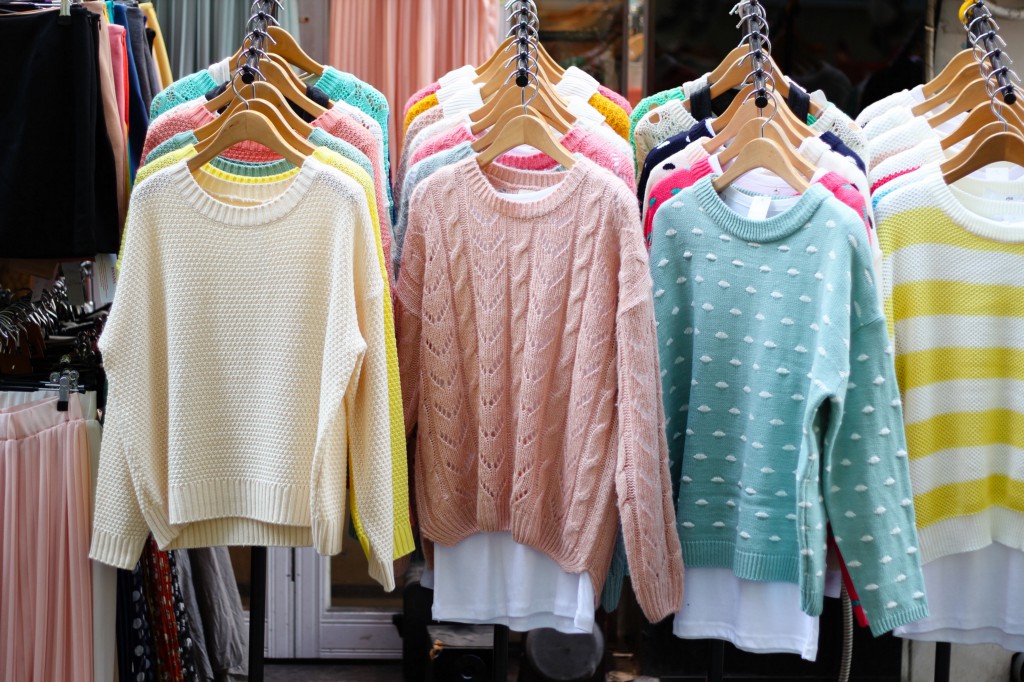What We Talk About When We Talk About Professional Clothing
Robin Givhan, I love you, but I don’t know about this.

Here’s some 🤔 advice from the Washington Post’s fashion critic Robin Givhan about what young peole should do when faced with the particularly horrible challenge of getting dressed for their first job.
“Fast fashion” will be tempting. Those bargain prices will be alluring. And with a new college degree in one hand and a job offer in the other, it will be easy to wander into one of the many chains selling disposable fashion in an attempt to create an entire workday wardrobe as cheaply and as quickly as possible. Resist.
Buy less. Buy better.
It’ll benefit your finances in the long run. It’s gentler on the environment. It can help encourage fairer wages and working conditions for garment workers. And ultimately, it’s a way of acknowledging that we’re all linked together in one big global economy.
Skip the ‘fast fashion,’ and other first-job wardrobe advice from an expert
What Givhan is saying here isn’t incorrect — fast fashion does tend to fall apart quickly because it was made by garment workers making pennies. Technically, it is also better for the environment because if your cardigans last for five years instead of one and a half, that’s less clothes for the landfills and/or the giant pile of floating trash somewhere out in the pacific. All of these things are stuff to take into consideration when standing in front of an H&M and preparing yourself to drop $100 on enough work slacks and polyester shells to get you through an entire month at your brand new paralegal job.
But…where are these people getting the money? Givhan suggests Everlane instead of Forever21 — a huge leap in both price and aesthetic — and H&M’s upscale and decidedly more Scandidnavian cousin COS instead of Topshop. These comparisons don’t make a lot of sense from a financial standpoint or from an aesthetic one, either. The point is, I get what Givhan is saying on the surface: buying clothes that are higher quality will ostensibly last you longer. What’s more important is what she’s trying to say: the better the quality, the “classier” the clothes and by extension, the wearer.
Everlane and COS sell elevated “basics” in shapes and fabrics that are higher quality than their lower-priced counterparts. These pants cost $115 and could be the cornerstone of a young professional’s wardrobe, if that young professional graduated from college with no loans and a disposable income that would allow them to spend $115 on a pair of pants that they’d need to dry clean weekly if they didn’t want to be gross, or monthly if they did. Maybe you hate pants and want to dress like a Danish architect; please consider this dress from COS for a cool $115. I would love nothing more than to buy all of my clothing from quietly expensive retailers and to throw away my giant pile of dresses and sweaters and pants and things from H&M and the sale section of Old Navy, but Everlane and COs and the like only go up to a size 12. There are a lot of women who want to buy into the kind of professional and personal life an Everlane silk shirtdress promises but don’t wear a size 12. For all its evil, fast fashion meets the needs of those women who still want to look pulled together because those retailers recognize that a woman who wears a size 16 still wants to look fashionable.
The argument that the things you spend money on will ostensibly save you more money in the long run — because they won’t fall apart, because they’re not “cheap,” because they’re “built to last” — doesn’t always hold water. I bought a leather jacket almost on a whim for $200 from Nordstrom Rack at the end of last summer, telling myself that it better last for the rest of my life. WIthin a week, the leather ripped by the left pocket. Is $200 too little to pay for a leather jacket? Yes, probably, but it was also the most amount of money I’d spent on a coat that wasn’t some form of technical outerwear meant for a winter sport or extreme weather. If I had spent $200 or $300 more, would the jacket have ripped in the same damn place? Who knows!
Givhan doesn’t guarantee that an Everlane shirt won’t fall apart in the wash, but she insinuates that it might not.
The argument for buying better-quality clothes includes the likelihood that they will last longer and look better after multiple washings — or dry cleanings. You will probably enjoy wearing them more than you would something that feels flimsy or vaguely flammable.
The shirt I’m wearing is from Miley Cyrus’s clothing collaboration with WalMart. I purchased it at a Buffalo Exchange for $5 maybe 10 years ago. Somehow, it is still a shirt. Maybe it’s flimsy and I have no doubt that it’s flammable, but it has held up.
“In general, I don’t buy the idea that if you buy something of quality, it saves you money over time,” The Hairpin’s own Kelly Conaboy said when I brought this up in Slack. “People are going to spend money at all times.” Buying a $115 dress that you wear twice a week to your brand new job isn’t going to prevent you from emotionally purchasing three sundresses and a new pair of jeans on sale from your fast fashion retailer of choice.
If you’re able to buy a wardrobe of tasteful work separates from the “classier” places, great. But don’t feel badly about what you wear if you can’t.
Support The Billfold
The Billfold continues to exist thanks to support from our readers. Help us continue to do our work by making a monthly pledge on Patreon or a one-time-only contribution through PayPal.
Comments